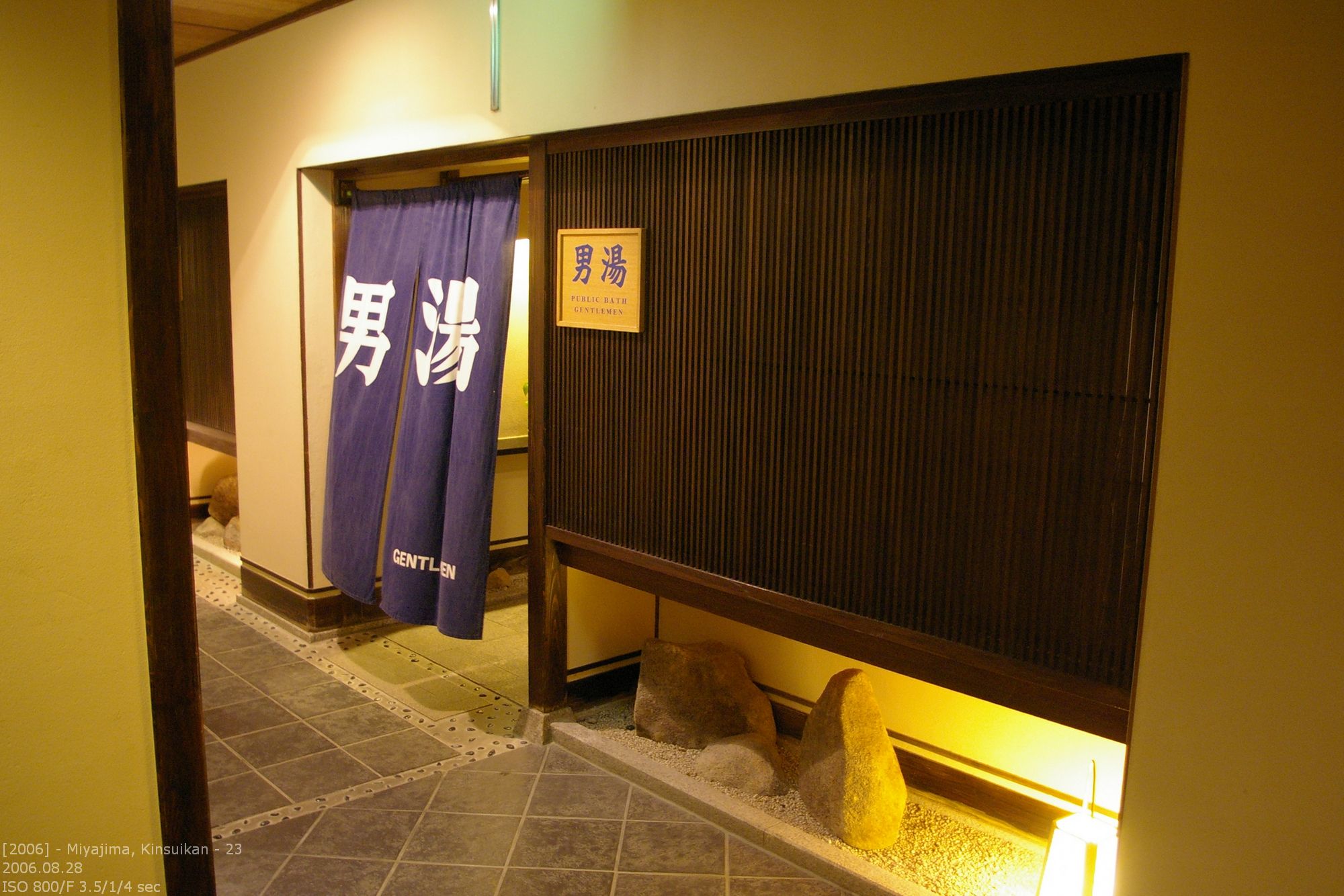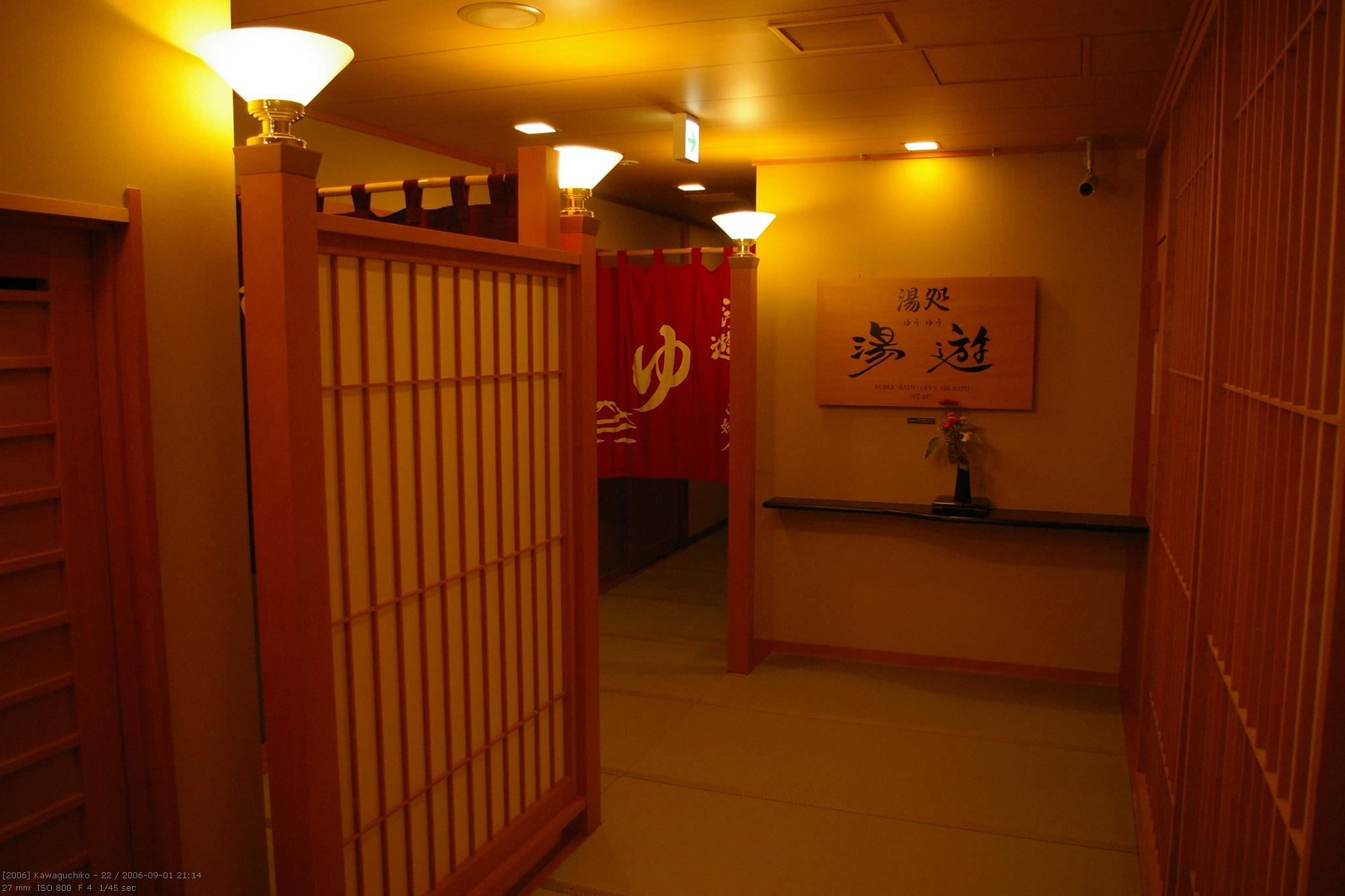A Ofuro (風呂) is just a simple bath room with a tub. Hotels use this term sometimes to indicate that they provide more than a simple shower room. A Rotenburo (露天風呂) is bath tub outside under the free sky.
The terms „Private Rotenburo“ and „Private Onsen“ I have to explain. You take the bath naked. A onsen is a bath room and not a swimming pool. Therefore men and women are strictly seperated into different sections. The only exception is for small children that are accompanied by only one parent. If you traveling with your partner, even if you are married, you cannot take a bath together … beside in a private onsen/rotenburo. Like the names says, it is private. If it is in use there is a small sign at the door. If so, it is off limits for everyone else. Sometimes you find the term „family rotenburo“. I assume that this also stands for a big tub for the whole familiy.
A Yukata is the bath robe. Nothing more, nothing less. They provide them in hotels and you can wear them inside the hotel. In a hot spring resort you will see many Japanese that are walking around in the city wearing a yukata. I did it to in Shibu/Yudanaka in 2004 and Sounkyo in 2010. Very comfy. You also wear the yukata if you go to a shrine or temple festival or a firework, unless it is not that cheap blue and white version of the hotel. The yukata is a bath robe and also the informel version of the kimono.
Eingang
Onsen as a holiday experience
For Japanese onsen is more than just taking a bath. They create a complete holiday weekend around it; Friday to Sunday just relaxing in a onsen. Japanese have on 10 free days in a year (or even less). Therefore a weekend in an onsen is worth a lot. This is also the reason why theses places are so crowded at the weekend.
There are also many stereotypes around the myth of onsen. Specially if you travel with your girlfriend *hint*hint* Traditional ryokans do not allow to share a room if you are not married. Sometimes these rules are also apply for „private rotenburo“. There you are allown but you are still naked and not married.
„Onsen during wintertime“ was a priority on my list. This is one of the stereotypes. 2013 I realized this point. It was awesome. 17°F and I was sitting in the hot water of an rotenburo and enjoying the snow fall. I just skipped the sake because of bad experience in the past.
Writing
It doesn’t matter if you are looking for an onsen (温泉) or a sento (銭湯), you should look for the following character: 湯 and ゆ. Both are read „yu“ are translated „water“. Those character you will find on the flags next to the entrance door. If you want to take a bath, look for those characters.
Entrance und changing places
I already mentioned that the bath is seperated by sex. Therefore you have seperated changing rooms and entrance doors. They are always marked very clear. In a hotel there are sometimes noren with different color: blue = men; red = women. Additionally thery are Kanji printed on the noren or a small sign next to the door: 男 = otoko, man; 女 = onna, woman. Smaller onsen may a central entrance, with the ticket counter, and split behind this first door.
There is one specialty that can lead to embarrassing situation: Onsen may change sides! There are two possibilities: They chance sides once a day or twice a day. Usually once during closing time at night and in the afternoon. So be careful. Don’t use automatically the same door in the evening that you used in the morning or the same door you used yesterday. Always check out the noren and the signs. In hotels you will be informed about it during your check-in.
More on the next page …


